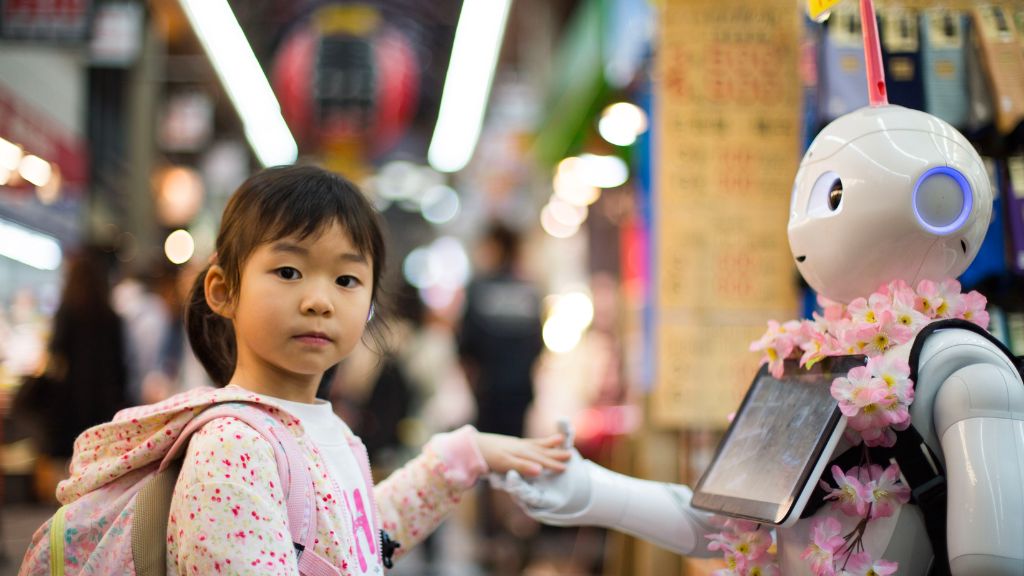Exclusive: Why Japan’s trade ministry plans to be a digital role model
By Vanessa Gu
METI's digital lead, Hiroki Yoshida, tells GovInsider how his department is creating e-government services for the future.

Hiroki Yoshida, Deputy Director of Digital Government and IT Industry Policy at the Ministry of Economy, Trade and Industry (METI), says this mindset is holding back the government’s digital transformation. “We have some good technologies, and some new tech coming in - new guys, clever guys. However, because of slow decision making, we cannot achieve these kinds of technologies with clarity,” says Yoshida.
In a country where some still prefer using bamboo and stamps for bank authentication, Yoshida wants his ministry to lead the way in creating cutting-edge digital transactions. He wants to do that by using METI’s strong relationships with businesses, working with the central government, and building flexible data infrastructure.
‘We want to be the role model’
METI provides government services for businesses across Japan. It started a Transformation Office last year to push digital services. In that time, it has already released an online authentication system, and is now creating platforms to support SMEs and for online grants application.
Yoshida says there is a gap between the public and private sector when it comes to providing digital services, and wants to reduce that gap by working with businesses. “Government and companies are both wheels of the car. If we cannot change both sides of mindset, we cannot move to a digital society,” says Yoshida.
The ministry sees itself as a test bed and is focused on coming up with digital services that can be easily ported to other government agencies. “We want to create more fundamental services which we can share with other government agencies,” Yoshida says. For instance, government grants portals are exactly the kind of services which can be centralised since “from the customer's point of view, any subsidies are equal”.
METI is “ahead of other ministries in terms of digitalisation”, he believes. “Many other government agencies may not know as much about how to digitalise their services, and we want to be the role model.”
2019: Year of Japan’s digitalisation
The Japan Government is using the 2020 Tokyo Olympics as a hard deadline for its tech transformation. It has used the mega-event as a way to push civil servants to make major changes. For instance, it wants to build a “hydrogen society”, which will cut the use of fossil fuels and use more renewable energy sources. It’s transforming support for the ageing population using robotics. And the government is zooming in on digital payments provided by the private sector.
Compared to its neighbours, Japan has been slower to take up cashless payments, preferring to pay in cash even for big ticket items. According to government estimates, Japan’s digital payments made up 19 percent of transactions in 2016. In China, the cashless rate stood at 60 percent, and in South Korea, it was close to 90 percent. Japan wants to double digital payments to 40 percent of all transactions by 2027.
It even plans to give tax cuts of up to 5 percent of purchase amounts for a period of nine months to consumers who make cashless payments at small or medium retailers. Cashless payment operators will also be required to cap their fees to receive subsidies. “If they buy something with digital payment methods, we will refund some amount of taxes to consumers. By doing so, we will expand consumers' use of digital payments services,” says Yoshida.
Transformation through open data
To speed up the government’s digital transformation, the ministry wants to get help from the private sector by creating a digital ecosystem.
It is creating a data exchange platform this year for the public and private sectors to share services, with platforms called Application Programme Interfaces or APIs allowing government agencies to connect with tech company platforms. “We need to prepare for APIs to connect with startup services, because nowadays, many tech startups are using APIs to collaborate. We need to be in this ecosystem as a player in the market,” he adds.
Yoshida wants to learn from Estonia, Finland and the UK when setting up a sound and secure data architecture. But he is also looking to China and India because “they are leapfrogging by utilising digital technologies and organising very good digital services to the people.”
In April 2019, the Japanese parliament will debate a bill for the Digitalisation of Government Administration, which means agencies must come up with a plan to improve their online services. “The implementation plan, based on the bill, will force the agencies to reorganize systems,” Yoshida says.
Meanwhile, the youthful digital lead at METI is focused on creating user-friendly digital services in his ministry. He intends to demonstrate “the benefits of the new workflow and equip [colleagues] with these skills,” Yoshida hopes.
His Ministry operates in a relatively traditional business culture where corporate decisions can be made by tight-knit networks behind closed doors. But digital services are set to transform the economy, enabling startups to keep Japan at the forefront of global innovation.